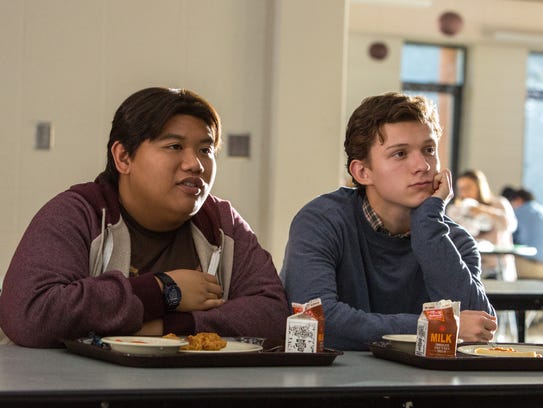‘Homecoming’ in several ways, one of which must be a knowing wink from Marvel Studios that they have finally brought the property back to where it belongs. After the weird diversions of the Amazing Spider-Man films, and the disappointment of the third Tobey Maguire movie, this finally gets the Spidey film on the right track.
It’s also a nice narrative arc to hang the film on, after the abrupt introduction of the character in Captain America: Civil War. Most superhero film franchises begin with an origin story and work outwards, with the main character taking their place in the world fighting against evil. This one starts on the grand stage and moves inwards. After getting a taste of Avengers action, Peter Parker is desperate to become a member and leave his dull high-school existence behind. That, however, is a rejection of what Spidey is all about: a superhero who is in the same situation as the teenagers that read his comics – juggling homework, family, bullies, and crushes on cute girls.
And this film has Parker dropping all of those balls. It rather neatly evokes the experience of competing expectations and responsibilities which are impossible to meet all at once. Being the cool superhero means disappointing your friends, or making your family anxious. This is conveyed physically by how clumsy Tom Holland's Spidey is at the job of fighting crime. Some of the biggest laughs in the film are from him crashing through people’s back yards, knocking down sheds and tree-houses, and terrifying the kids out on a sleepover in their tent. Parker is not used to his superpowers in the same way teenagers are not used to their changing bodies. The metaphor is forcibly and enjoyably communicated.
There are shortcomings, mostly of emphasis. Marisa Tomei is not given enough to do as Aunt May – the rock on whom Peter depends, but also a burden of responsibility which weighs over his activities as a costumed hero. Tony Stark’s distance could have been reinforced by less Robert Downey Jr. on screen. But these are tiny flaws in what is a tricky feat to pull off – an introduction to Spider-Man that’s not yet another Spider-Man origin story.
10.7.17
7.7.17
The Gap between Panels / Breaking out of History
Latest column on the London Graphic Novel Network looks at The Infinite Loop by French creative team Pierrick Colinet and Elsa Charretier. It's a cute time-travel story that uses the idea of stepping outside time to discuss the marginalisation of LGBT+ people throughout history. It's also a very impressive book from a craft perspective, particularly in its use of design and layouts. Read the piece here.
Subscribe to:
Comments (Atom)
